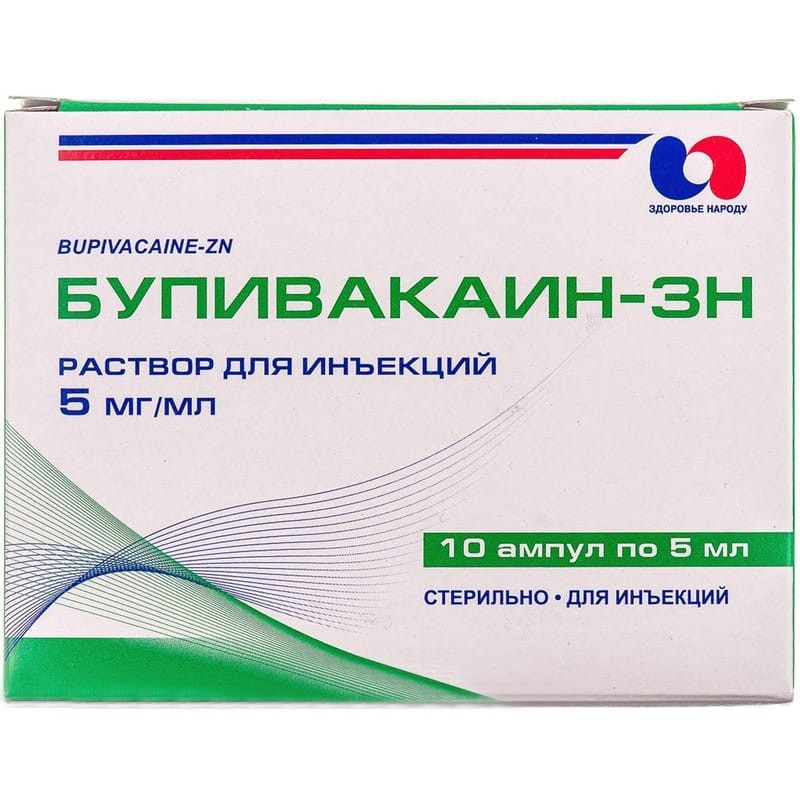



 Secure and encrypted payment processing
Secure and encrypted payment processing We ship to over 40 countries including the USA, UK, Europe, Australia and Japan
We ship to over 40 countries including the USA, UK, Europe, Australia and Japan Guaranteed refund or reship if you haven't received your order
Guaranteed refund or reship if you haven't received your orderBupivacaine Injection Solution for:
Active substance: bupivacaine;
1 ml of bupivacaine hydrochloride in terms of 100% substance 5 mg;
Excipients: sodium chloride, dilute hydrochloric acid or sodium hydroxide, water for injection.
Hypersensitivity to local amide type anesthetics or to other components of the drug.
Bupivacaine should not be used for intravenous regional anesthesia (Bieri block).
Bupivacaine should not be used for epidural anesthesia in patients with severe arterial hypotension, for example, in the case of cardiogenic or hypovolemic shock.
Epidural anesthesia, regardless of the local anesthetic used, has its contraindications, which include: active nervous system diseases such as meningitis, polio, intracranial hemorrhage, subacute combined degeneration of the spinal cord due to pernicious anemia and tumors of the brain and spinal cord; spinal tuberculosis; purulent infection of the skin in or near the site of the lumbar puncture; bleeding disorder or ongoing anticoagulant treatment.
Bupivacaine should be administered by a doctor with experience in regional anesthesia, or the drug should be administered under his supervision. It is necessary to apply small doses to achieve a sufficient degree of anesthesia.
It is important to take extra care to prevent accidental intravascular injections. It is recommended to carry out an aspiration test before the introduction of the total dose, as well as with the introduction of the total dose. For epidural administration of high doses, a test dose of 3-5 ml of bupivacaine with epinephrine should be administered, since a random intravascular injection can cause, for example, a short-term increase in the heart rate, and a random intrathecal injection can cause spinal block. Within 5 minutes after the introduction of the test dose, you should maintain verbal contact with the patient and conduct periodic checks of the heart rate. In addition, it is necessary to aspirate before the introduction of the total dose, which should be administered slowly, at a rate of 25-50 mg / min, in stages, maintaining constant verbal contact with the patient. If symptoms of intoxication occur, the administration of the drug should be stopped immediately.
Bupivacaine should not be used in early pregnancy, unless it is believed that the benefit will exceed the risks.
Children with the indicated indications are not applicable.
Depending on the dose and method of administration, bupivacaine may exhibit a temporary effect on movement and coordination.
Systemic toxic reactions mainly occur in the central nervous system and in the cardiovascular system. Such reactions can be caused by a high concentration of local anesthetic in the blood in case of accidental intravascular administration, overdose, or extremely fast absorption with strong blood circulation.
Side effects caused by the drug itself can be difficult to distinguish from the physiological effects of nerve block (for example, lowering blood pressure, bradycardia), phenomena caused directly by needle puncture (in particular, nerve damage).
Caution should be exercised when using bupivacaine with drugs, similar in structure to local anesthetics, such as antiarrhythmic drugs of the IP class, because their toxic effects are additive.
Specific studies of the interactions between local anesthetics and class III antiarrhythmic drugs (e.g., amiodarone) have not been conducted, but caution is recommended in this case.
Store in the original packaging at a temperature not exceeding 25 ° C.
Shelf life is 3 years.